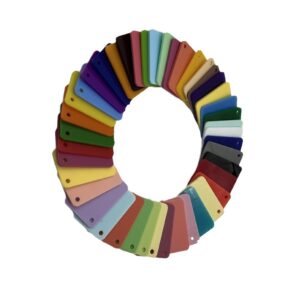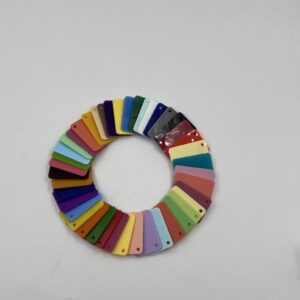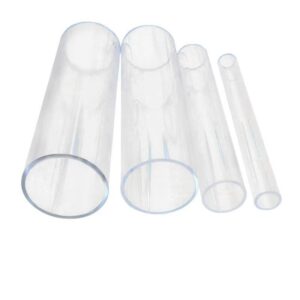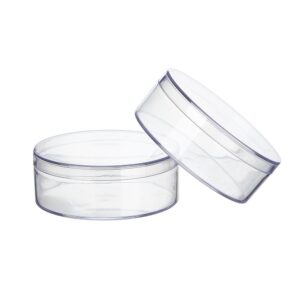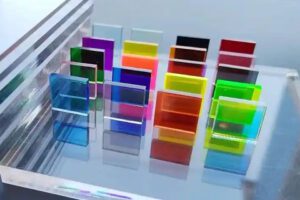Summary
Creating stunning custom acrylic awards and trophies involves the art of recognizing achievements across various sectors, including corporate, sports, and educational environments. Acrylic awards are celebrated for their versatility, durability, and aes- thetic appeal, making them a preferred choice for organizations seeking to honor accomplishments in a meaningful way. The ability to customize these awards through engraving, vibrant color printing, and innovative designs allows for a personalized touch, enhancing their significance as symbols of recognition.
Table of Contents
Historically rooted in the practice of engraving, which dates back thousands of years, the contemporary use of acrylic awards has evolved significantly. Advances in technology have enabled precise customization techniques such as laser engraving, sublimation, and sandblasting, allowing for intricate designs and bespoke elements that reflect individual achievements or corporate identities. This moderniza- tion not only revitalizes the tradition of engraving but also caters to the growing demand for unique and memorable awards in various fields.
The acrylic awards market is notable not only for its growth but also for its focus on sustainability. As awareness of environmental issues increases, manufacturers are exploring eco-friendly materials and practices to meet consumer demands for responsible products. This shift presents both challenges and opportunities in bal- ancing quality with environmental impact, making sustainability a significant consid- eration in the industry.
Despite the many advantages, the acrylic awards sector is not without its contro- versies. Discussions around the environmental impact of acrylic production and the long-term sustainability of materials pose important questions for manufacturers and consumers alike. As the industry continues to evolve, the integration of innovative practices alongside a commitment to responsible sourcing will be vital in shaping the future of custom acrylic awards and trophies.
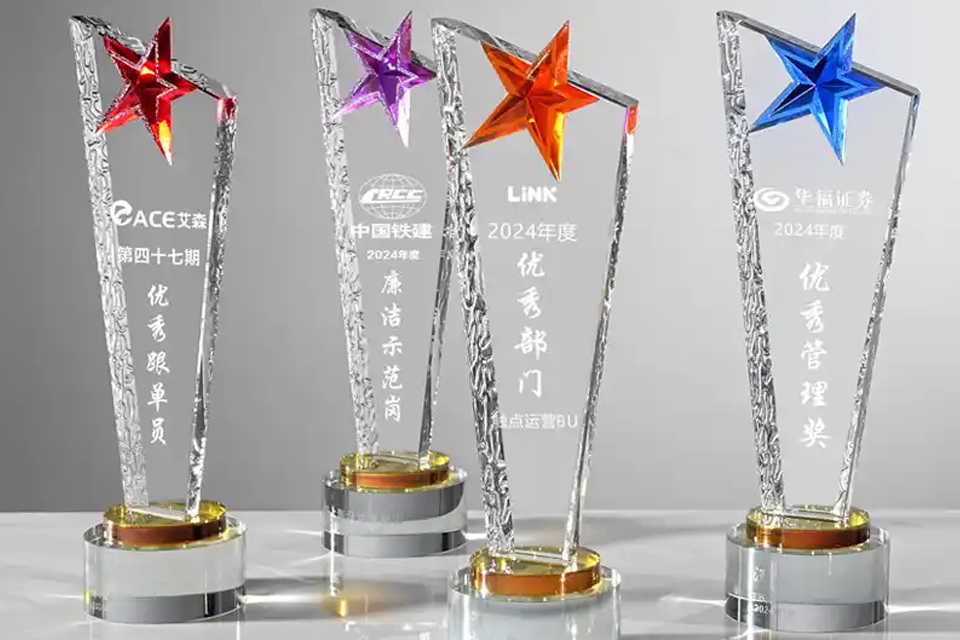
History
The practice of engraving, which has a rich historical background, can be traced back to prehistoric times. The first evidence of human engraving patterns dates back between 540,000 and 430,000 years ago in Indonesia, indicating the long-standing significance of this art form in human culture. During the Upper Paleolithic era, hand engraving on materials such as bone and ivory became a prominent artistic technique, with larger engraved petroglyphs discovered across various prehistoric periods and cultures worldwide.
Over time, engraving evolved and found numerous applications beyond artistic ex- pression. In modern contexts, engraving serves practical purposes, including creating personalized inscriptions on jewelry, pet tags, and trophy plates, reflecting achieve- ments in various fields. The distinction between engraving and other techniques such as marking and etching is important; each method has unique attributes suited for different applications, allowing for a broad range of uses in industries such as manufacturing and printing.
With the rise of customizable awards and trophies, the tradition of engraving has been integrated into contemporary recognition practices. Today, awards are crafted using various materials, including acrylic, glass, and metal, with personalization options through engraving services that add a bespoke touch to each item. This modern adaptation not only celebrates individual accomplishments but also enhances the overall aesthetic appeal of the awards, making them meaningful tokens of recog- nition. The combination of historical techniques and contemporary design has allowed the art of engraving to flourish, establishing it as an essential component in the creation of stunning custom awards and trophies.
Types of Acrylic Awards and Trophies
Overview of Acrylic Awards
Acrylic awards are a modern and stylish way to recognize achievements across various fields, including corporate, sports, and academic settings. Their versatility allows for customization in terms of shape, size, and design, making them suitable for numerous occasions, from employee appreciation events to student excellence ceremonies.
Varieties of Acrylic Awards
Custom Acrylic Trophies
Custom acrylic trophies come in an array of shapes and sizes, allowing organizations to choose awards that align with their branding or event theme. Options range from towering sculptures to minimalist designs, catering to diverse aesthetic preferences. The ability to incorporate vibrant hues and intricate color printing enhances the uniqueness of each award.
Engraved Acrylic Awards
Engraved acrylic awards are distinguished by their precision and attention to detail. Utilizing state-of-the-art technology, these awards can feature custom text and de- signs, ensuring a polished and professional finish. Engraving can include names, dates, and personalized messages, which add a significant touch to the awards.
Specialty Designs
Acrylic awards also come in specialty designs that highlight specific achievements. For example, awards like the Jewell Hexagon Silver Polygon and Bryson Clear Towers are tailored for corporate recognition, while trophies such as the Olsen Star and Liang Flame honor student accomplishments. These designs not only celebrate achievements but also serve as sophisticated decor.
Customization Options
Customization is a key feature of acrylic awards, with options available for free engraving and bespoke design elements. Organizations can incorporate logos and thematic designs to enhance the awards’ relevance to the occasion. This personal touch helps make each acrylic award unique and memorable for the recipient.
Benefits of Acrylic Awards
Acrylic awards offer several advantages, including durability, affordability, and aes- thetic appeal. They are shatter-resistant and can withstand the rigors of everyday handling, making them ideal for awards given in environments such as schools and sports teams. Additionally, the optical clarity of acrylic ensures that these awards shine brightly, making them eye-catching symbols of accomplishment.
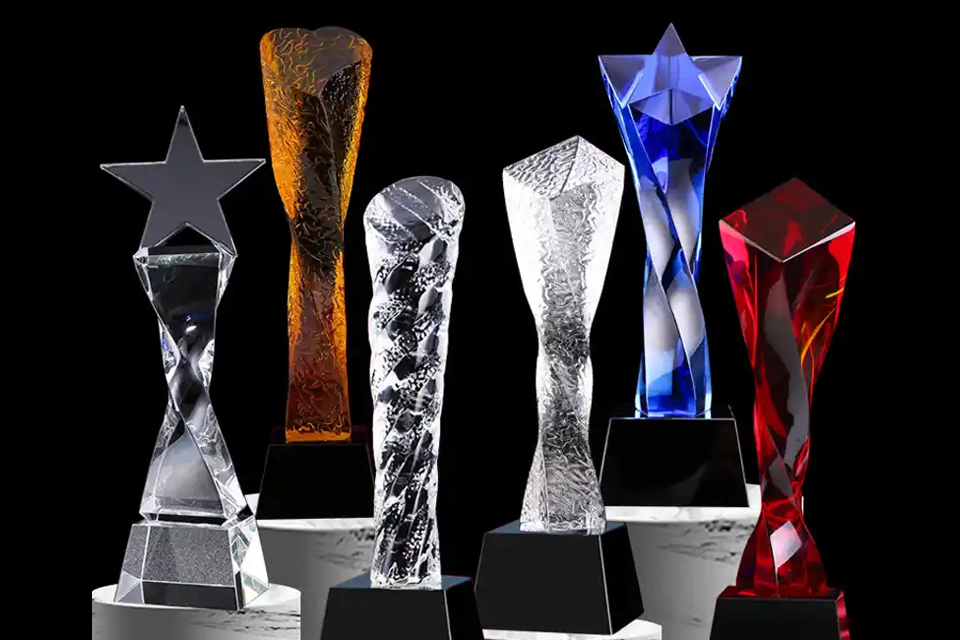
Design and Customization
Customization Techniques
Creating stunning custom acrylic awards and trophies involves selecting the right customization methods to align with the desired outcome and design complexity. Options such as full-color engraving, sublimation, and sandblasting can enhance the aesthetic appeal and functionality of the awards. Full-color engraving allows for high-quality, vibrant images, making it suitable for logos and designs with multiple colors. Sublimation is a preferred method for producing vivid and long-lasting designs by transferring images onto the acrylic surface using heat and pressure, offering limitless color possibilities. Sandblasting, on the other hand, engraves text and logos finely onto materials like crystal, glass, and acrylic, creating a sophis- ticated appearance.
Material Selection
The choice of materials plays a crucial role in the effectiveness of the design. Acrylic is popular due to its durability and ability to display intricate details through laser engraving. Other materials such as wood, metal, and glass can also be utilized, depending on the intended style and audience. Understanding the brand identity is essential; designers should consider the colors, logo, and values of the organiza- tion to ensure that the customization method complements the overall aesthetic and message of the award.
Design Principles
Effective design of custom acrylic awards requires a thoughtful approach to ty- pography, color schemes, and layout. It’s essential to choose typefaces that enhance readability and reflect the significance of the award. A simple, well-executed design often has a more substantial impact than a cluttered one; therefore, balancing creativity with simplicity is vital. Designers should also collaborate closely with their award providers to ensure that their vision is realized and that all elements are harmoniously integrated.
Incorporating Trends
Designers are encouraged to observe and incorporate trending themes into their projects, such as minimalism and nature. By merging functional elements with creative aesthetics, custom awards can serve as both decorative pieces and practical items. Additionally, personalization can be enhanced through the use of unique materials and creative finishes, ensuring that each award is not only visually appeal- ing but also enduring in quality and significance.
Manufacturing Process
The manufacturing process of acrylic awards and trophies involves several critical stages, from raw material extraction to final production. Acrylic resins, primarily made from methacrylic acid or related compounds, serve as the foundational material for these products. The process starts with the extraction of petroleum, which is a non-renewable resource. This extraction can have significant environmental impacts, including energy consumption and potential habitat destruction if not conducted responsibly.
Material Preparation
Acrylic sheets are created through an energy-intensive process that includes poly- merization and extrusion, allowing for the material to be shaped into various forms. The resulting sheets are highly transparent, UV-resistant, and can be molded into diverse shapes, making them popular for awards and trophies. However, it is essential to consider the potential environmental drawbacks associated with acrylic production and disposal.
Design and Crafting
Once the acrylic material is prepared, the design phase utilizes advanced techniques such as computer-aided design (CAD) to create intricate designs that meet customer specifications. The manufacturing of acrylic awards demands a high level of techno- logical expertise to ensure quality output and adherence to design specifications. Skilled labor is crucial for processes like CNC milling, laser engraving, and final as- sembly. A shortage of skilled workers can delay production and impact the fulfillment of large orders.
Engraving and Finishing
Engraving methods play a vital role in the aesthetic appeal of acrylic awards. Various techniques, such as diamond drag engraving, UV printing, and abrasive etching, are used to personalize awards with names, logos, or designs. Each method offers unique benefits; for instance, diamond drag engraving provides high precision akin to hand engraving, while UV printing allows for vibrant color applications. The choice of engraving method often depends on the desired outcome and the specific properties of the acrylic being used.
Quality Control and Sustainability
Throughout the manufacturing process, quality control measures are essential to maintain high standards. This includes evaluating the integrity of the materials and ensuring that the final products meet aesthetic and durability expectations. Sustain- ability has become a critical focus within manufacturing, prompting many acrylic manufacturers to explore recycled materials and biodegradable alternatives. Approx- imately 50% of decision-makers in corporate gifting now consider sustainability as an integral factor in their procurement strategies. This shift encourages innovation and collaboration with suppliers to develop eco-friendly acrylic products while maintaining aesthetic appeal.
Advantages of Acrylic Awards
Acrylic awards offer a multitude of benefits that make them an appealing choice for recognizing achievements across various settings. Their affordability, durability, and versatility stand out as key factors that contribute to their popularity in corporate and organizational recognition programs.
Cost-Effectiveness
One of the primary advantages of acrylic awards is their cost-effectiveness. Acrylic is significantly less expensive than crystal or glass, allowing organizations to allocate their budgets more flexibly. This affordability makes it possible to recognize every member of a team without compromising quality or design aspirations.
Durability and Impact Resistance
Acrylic is known for its lightweight yet sturdy composition, making it highly resistant to scratches and impacts compared to other materials. This characteristic ensures that awards remain intact even when subjected to daily handling or accidental falls, thus offering a long-lasting recognition solution. The material can absorb impacts effectively, reducing the risk of chipping or damage, which is crucial for awards intended for regular display.
Customization Options
Acrylic awards come in a wide variety of shapes, sizes, and colors, allowing for ex- tensive customization to fit any theme or corporate identity. This adaptability ensures that each award can be tailored to highlight individual achievements in a meaningful way. Additionally, the ability to incorporate features such as LED lighting and various finishes enhances the visual appeal of the awards, making them standout pieces in any recognition ceremony.
Environmental Considerations
With growing awareness of environmental issues, many manufacturers now use eco-friendly materials, including recyclable acrylic. This reduces the carbon footprint associated with production and transport, appealing to organizations that prioritize sustainability.
Visual Appeal
The optical clarity of acrylic awards closely resembles that of crystal, providing a high-quality aesthetic that is visually pleasing. Most awards are crafted from cell cast acrylic, which involves pouring liquid acrylic between two sheets of glass. This pro- cess not only enhances the clarity but also allows for intricate engraving that results in a frosty white image, adding an elegant touch to the award’s presentation.
Applications
Educational Institutions
Acrylic awards are widely utilized in educational settings, where they serve as moti- vators for students and recognition for achievements. Schools and universities often invest in custom awards for academic competitions, sports events, and graduation ceremonies. Awards such as “Student of the Year,” “Outstanding Academic Achieve- ment,” and recognitions in extracurricular activities are commonplace, with statistics indicating that over 40% of educational institutions engage in award systems annual- ly. The emphasis on academic excellence has significantly increased the demand for customizable acrylic trophies, providing tangible motivation for student efforts.
Corporate Sector
In the corporate world, acrylic awards play a crucial role in employee recognition and motivation. As companies increasingly prioritize employee engagement, these awards are frequently used in annual events, recognition ceremonies, and perfor- mance awards programs. Approximately 60% of acrylic award sales are attributed to businesses acknowledging their employees’ hard work, with a report indicating that nearly 70% of top-performing companies have formal recognition programs in place. The durability and aesthetic appeal of acrylic awards not only serve as recognition tools but also as decorative pieces for desks or offices.
Sports Organizations
The sports industry heavily relies on awards to celebrate achievements across various levels, from amateur leagues to professional events. Acrylic trophies are particularly popular among local youth leagues and schools due to their lightweight and durable nature, making them a budget-friendly yet attractive option compared to glass awards. An estimated 30% of the acrylic awards market is derived from the sports segment, reflecting the growing participation rates in organized sports globally; youth sports participation alone reached about 40 million children in the U.S., contributing to a significant spike in trophy demands.
Non-Profit Organizations
Non-profit organizations also leverage acrylic awards to recognize the contributions of volunteers and donors during fundraisers or community events. These initiatives aim to boost volunteerism, with the non-profit sector contributing approximately 15% to the total demand for acrylic awards. The design flexibility of acrylic, which allows for engraving or printing logos, makes it a suitable choice for organizations that prioritize brand visibility alongside their recognition strategies. As corporate social responsibility (CSR) becomes more prominent, collaborations between companies and non-profits often lead to customized recognition pieces that reflect shared values and community impact.
Customization Segment
The increasing trend towards personalization has led to the emergence of a distinct market segment focused on customization. Businesses are now diversifying their approaches to recognition beyond traditional trophies and plaques, with nearly 79% of employees expressing a preference for personalized awards over generic options- . This shift has driven demand for tailored acrylic awards that feature specific engravings, colors, and designs, allowing consumers to seek unique pieces that resonate with personal accomplishments or company values. This trend highlights the evolving nature of recognition strategies across various sectors, underscoring the importance of individuality in award presentations.
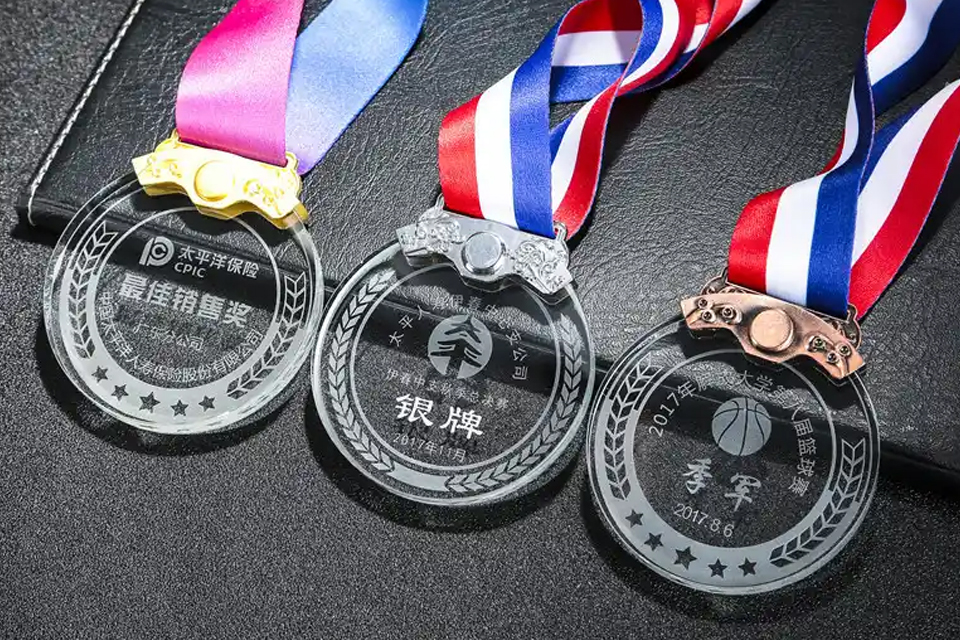
Trends and Innovations
Evolving Market Dynamics
The acrylic awards market has witnessed significant transformations driven by advancements in technology and changing consumer preferences. With a grow- ing emphasis on customization, manufacturers are increasingly adopting advanced production processes such as laser engraving and digital printing, which allow for intricate designs that cater to individual tastes and branding needs. This shift towards personalization has led to customized awards commanding price premiums ranging from 20% to upwards of 50% compared to standard offerings, creating opportunities for companies that specialize in bespoke designs.
Sustainability and Eco-Friendly Practices
Sustainability is becoming a pivotal factor in the acrylic awards industry. Manu- facturers are exploring biodegradable materials and recycling options to align with consumer demand for environmentally responsible products. The integration of sustainable practices within the supply chain not only enhances brand loyalty among conscious consumers but also presents challenges in terms of sourcing and production that require investment in research and development.
Growth in Emerging Markets
The potential for growth in the acrylic awards sector is particularly notable in regions such as Asia-Pacific, where rapid industrialization and a rising culture of recognition are fostering increased demand for customized products. Countries like China and India are seeing a surge in expenditure on awards, with projected growth rates around 6% until 2028, highlighting the expanding recognition culture in both corporate and educational institutions. Additionally, Latin America is experiencing gradual growth driven by social events such as weddings and graduations that require unique recognition items, with growth rates estimated between 3-5%.
Technological Innovations
The incorporation of cutting-edge technologies, including 3D printing and CNC milling, is revolutionizing the production of acrylic awards. These innovations allow for unparalleled customization options and rapid prototyping, enabling companies to deliver unique products tailored to their clients’ specifications. Moreover, the use of computer-aided design (CAD) software enhances design precision and streamlines the fabrication process, making it easier for manufacturers to meet diverse consumer demands.
Changing Recognition Programs
As corporate gifting and recognition programs evolve, companies are increasingly looking to blend tangible accolades with experiential rewards. This approach helps to create a more memorable experience for recipients, allowing them to associate their achievements with broader, meaningful activities rather than simply receiving a trophy. Such experiential segments are becoming integral to recognition strate- gies, reflecting a cultural shift towards valuing experiences over material posses- sions.
The Role of Supplier Relationships and Logistics
The importance of strong supplier relationships cannot be overstated, as they are essential for ensuring quality control and timely production. Companies that establish reliable partnerships with suppliers can navigate potential disruptions in the supply chain more effectively, thus maintaining efficiency in their operations. Additionally, logistics play a critical role in the distribution of acrylic awards, with geographically positioned manufacturing facilities enhancing supply chain efficiency and reducing shipping costs.
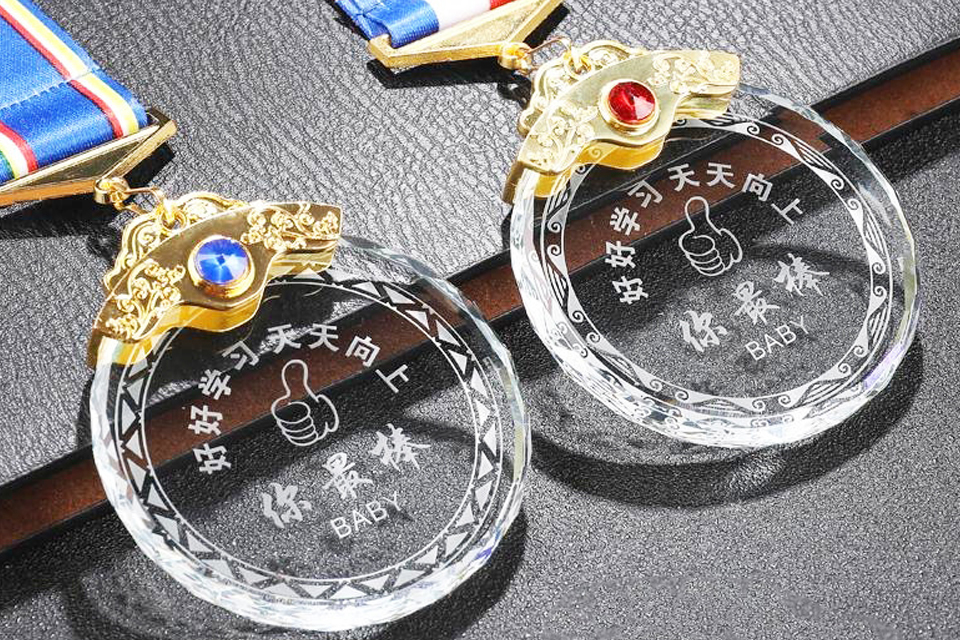
Care and Maintenance
Acrylic awards and trophies require specific care and maintenance to ensure their longevity and aesthetic appeal. Proper handling and cleaning can help prevent scratches, clouding, and other forms of damage that can occur over time.
Cleaning Acrylic Awards
To maintain the clarity and shine of acrylic awards, it is recommended to use a soft, lint-free cloth for cleaning. Avoid using paper towels or abrasive materials, as these can cause scratches on the surface. For a deeper clean, a solution of mild soap and warm water can be applied. It is essential to avoid ammonia-based cleaners, as they can lead to yellowing and degradation of the acrylic material.
Storage and Display
When not in use, acrylic awards should be stored in a cool, dry place to prevent warping or distortion. If displaying acrylic awards, consider using stands that provide adequate support and minimize direct contact with surfaces. Displaying them away from direct sunlight will also help to prevent any potential fading or yellowing caused by UV exposure.
Handling Practices
When handling acrylic awards, it is advisable to hold them by the edges rather than the surface to minimize the risk of fingerprints and smudges. Using gloves can further protect the surface during handling and presentation. Additionally, avoiding placing heavy objects on top of acrylic awards will help maintain their shape and integrity over time. By following these care and maintenance tips, owners can ensure that their custom acrylic awards and trophies remain in pristine condition, continuing to serve as a testament to achievements for years to come.





